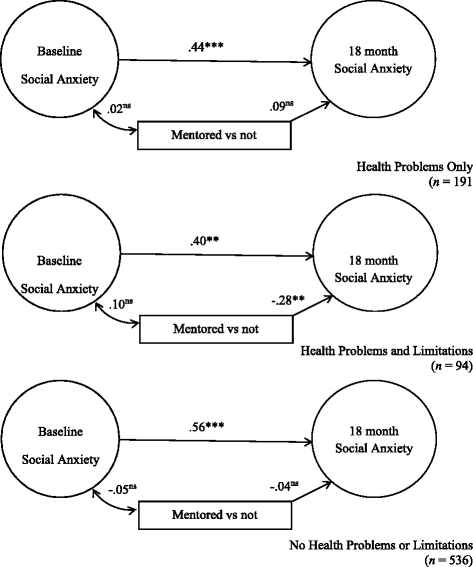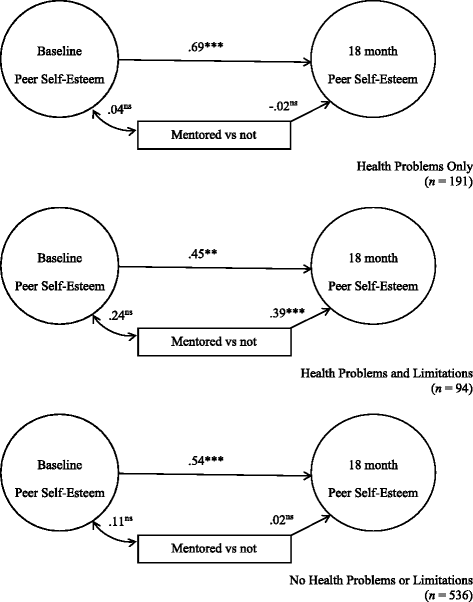Youth with chronic health problems: how do they fare in main-stream mentoring programs?
- PMID: 29304853
- PMCID: PMC5755442
- DOI: 10.1186/s12889-017-5003-3
Youth with chronic health problems: how do they fare in main-stream mentoring programs?
Abstract
Background: Youth with chronic physical health problems often experience social and emotional problems. We investigate the relationship between participation in the Big Brothers Big Sisters of Canada community-based mentoring programs (BBBS) and youth social and mood outcomes by youth health status.
Methods: Youth newly enrolled in BBBS were classified by health status (one or more chronic physical health problems without activity limitation, n = 191; one or more chronic physical health problems with activity limitation, n = 94; no chronic health problem or activity limitation, n = 536) and mentoring status (yes/no) at 18 month follow-up. Youth outcomes measured at follow-up were social anxiety, depressed mood, and peer self-esteem.
Results: Youth with chronic health problems and activity limitation were more likely to live with two biological parents, use mental health or social services, and have parents who reported difficulties with depressed mood, social anxiety, family functioning and neighbourhood problems. At 18 month follow-up, mentored youth in this health status group experienced fewer symptoms of social anxiety and higher peer self-esteem compared to non-mentored youth. Mentored youth with chronic health problems without activity limitation and mentored youth with no health problems or limitations did not show significant improvements in social anxiety and peer self-esteem. Regardless of their health status, mentored youth reported fewer symptoms of depressed mood than non-mentored youth.
Conclusions: Youth with chronic health problems, particularly those with activity limitation as well, demonstrate a capacity to experience social and mood benefits associated with mentoring.
Conflict of interest statement
Ethics approval and consent to participate
The study was approved by the Centre for Addiction and Mental Health Research Ethics Board, and consent to participate was obtained.
Consent for publication
Not applicable
Competing interests
The authors declare that they have no competing interests.
Publisher’s Note
Springer Nature remains neutral with regard to jurisdictional claims in published maps and institutional affiliations.
Figures



References
Publication types
MeSH terms
Grants and funding
LinkOut - more resources
Full Text Sources
Other Literature Sources
Medical

